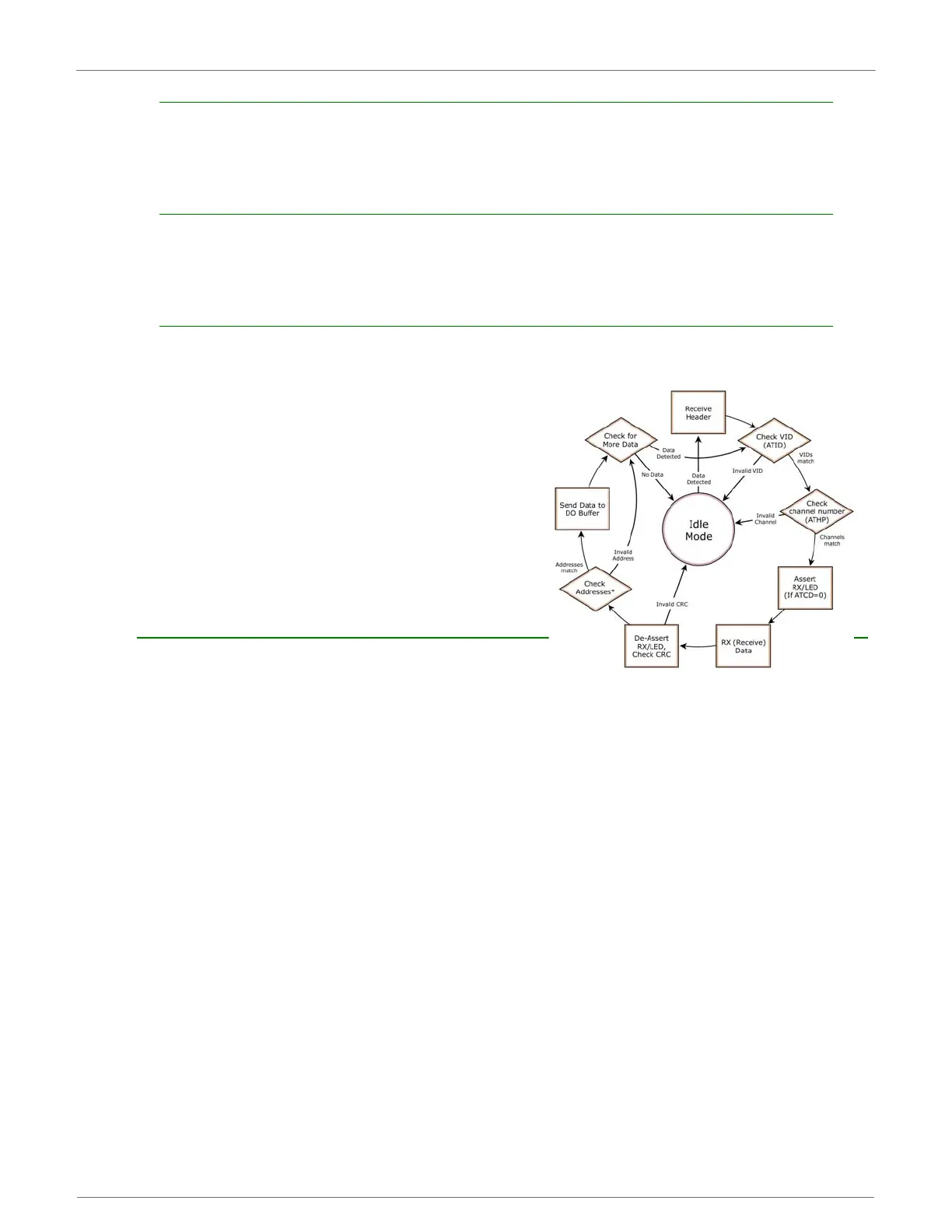XBee‐PRO®900HP/XBee‐PRO®XSCRFModules
©2014DigiInternationalInc. 104
Header
The header contains network addressing information that filters incoming RF data. The receiv-
ing modem checks for a matching Hopping Channel (HP parameter), Vendor Identification Num-
ber (ID parameter) and Destination Address (DT parameter). Data that does not pass through
all three network filter layers is discarded.
CRC (Cyclic Redundancy Check)
To verify data integrity and provide built-in error checking, a 16-bit CRC (Cyclic Redundancy
Check) is computed for the transmitted data and attached to the end of each RF packet. On the
receiving end, the receiving modem computes the CRC on all incoming RF data. Received data
that has an invalid CRC is discarded.
Receive Mode
If a module detects RF data while operating in Idle Mode, the module transitions into Receive Mode to start
receiving RF packets.
ReceptionofRFData
After a packet is received, the module checks the CRC
(cyclic redundancy check) to ensure that the data was
transmitted without error. If the CRC data bits on the
incoming packet are invalid, the packet is discarded. If
the CRC is valid, the packet proceeds to the DO Buffer.
The module returns to Idle Mode after valid RF data is
no longer detected or after an error is detected in the
received RF data. If serial data is stored in the DI
buffer while the module is in Receive Mode, the serial
data will be transmitted after the module is finished
receiving data and returns to Idle Mode.
Sleep Mode
Sleep Modes enable the XBee module to operate at
minimal power consumption when not in use. The
following Sleep Mode options are available:
•Pin Sleep
•Cyclic Sleep
For the module to transition into Sleep Mode, the module must have a non-zero SM (Sleep Mode) Parameter
and one of the following must occur:
• The module is idle (no data transmission or reception) for a user-defined period of time [Refer
to the ST (Time before Sleep) Command].
• SLEEP is asserted (only for Pin Sleep option).

